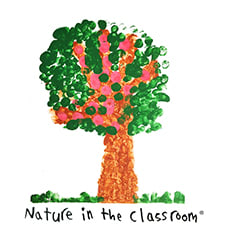Dive Brief:
- Helping students develop soft skills like adaptability, problem-solving and entrepreneurial and creative thinking requires shifts in teaching styles — from the “sage on the stage” dynamic where students passively absorb knowledge to one where they're more actively engaged and encouraged to be inquisitive, according to organizations involved in such practices.
- Employers from in-demand career pathways like construction, advanced manufacturing, healthcare and information technology all underscore the necessity of these durable skill sets to position young people for continuous improvement and agility in the workplace, said Meg Riordan, chief learning officer of nonprofit The Possible Zone.
- In K-12 classrooms, soft skills activities can run the gamut, from kindergartners submitting writings or drawings to show how they might solve a community or global problem, to middle schoolers learning financial literacy and beginning career exploration, to high schoolers undertaking project-based learning and meeting with employers, according to J.D. LaRock, CEO of nonprofit Network for Teaching Entrepreneurship.
Dive Insight:
Durable skills like communication, collaboration and adaptability "hold value across jobs and technologies and time," Riordan said. "Tools can change, standards can change, but human capacity to learn can travel from classroom to lab to workspace."
As such, she said, attaining these skills can increase economic mobility for students from any background.
The Possible Zone works with young people to develop durable skills alongside technical skills, leveraging projects in which students might create a prototype, get feedback from peers and ask questions of professionals in the field before refining their product. Based in Boston, the organization blends project-based and work-based learning, STEAM (science, technology, engineering, arts and math) activities and an “ecosystem” of employers and other partners to build both technical and softer skills, Riordan said.
“All of those experiences help students understand how to communicate with other people, and how to have a growth mindset in building something and then revising it,” she said. “It helps them to understand opportunity recognition and use creativity — another critical durable skill — to adapt ideas, imaginatively combine them, and solve problems."
Then, students are asked to reflect on what they learned through the process, how they experienced teamwork, and how they effectively cooperated, Riordan said.
Teaching soft skills is central to the entrepreneurship education model offered by the New York City-based Network for Teaching Entrepreneurship, according to LaRock. These skills, he said, are essential to all of K-12 and postsecondary education, as well as to the workplace.
“The key to successfully helping students at various ages be interested in and acquire soft skills is to meet them where they are and give them engaging opportunities to take part in this development,” LaRock said. “Soft-skill education, in my experience, is very different from traditional academic learning. It has less to do with memorizing facts. It’s metacognitive.”
The network has seen an increasing number of states wanting to infuse soft skills development into professional certifications, according to LaRock. The organization has built an assessment design across eight domains to help measure the achievement of those skills, he said.
School leaders need to create systems and structures that support teachers in building authentic projects for students and provide professional learning opportunities for teachers to do this work, Riordan said. “We need to listen to young people’s interests and passions, and to tap into the kinds of interests that they have that ignite their entrepreneurial spirit,” she said.
District and state leaders have long recognized that soft skill development is an important foundation for being a successful business owner or employee, LaRock said.
“Classic things like communication, problem solving and critical thinking, as well as opportunity recognition and the ability to manage risk," are skills that prepare students to be small business owners — and also successful employees, LaRock said.











